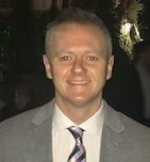Any first responder will tell you that communicating with the public is a vital component of their work, but is fire service leadership doing all it can to provide its personnel, on both the fire and medical sides, with the right tools to successfully perform this task?
That was the main question posed by communication instructor Kerry Mensior, a retired San Diego law enforcement officer, during his classroom session "Rapid Rapport for Rapid Responders" at Firehouse World in Las Vegas.
One of the primary goals when responding to an incident should be a tactical approach to quickly developing a rapport with the citizens being served, and Mensior acknowledged that this can be very difficult when tensions are running high while someone's home is in flames or loved one in medical distress.
"You feel like you don't have time to communicate and you don't have time to negotiate," Mensior said during a very engaging session in which all the attendees participated in the conversation and addressed seemingly simple yet complex questions.
Mensior related an incident early in his law enforcement career in which there literally was no time to communicate with an armed woman in mental distress who was eventually fired upon and killed when she turned the gun on him and his partner. Could that scenario have played out differently under different circumstances concerning communication?
An extreme example for sure, but one which gets to the heart of how tense some response calls can be and how rapidly they can deteriorate when the parties involved are not on the same page and communicating.
Another factor Mensior alluded to is that nowadays it seems like the public is far more skeptical of government agencies, including public safety, so the task of communicating has become that much more difficult. "People have become antagonistic toward people they used to regard as heroes," he said.
Some of the tools Mensior offered were basic psychological concepts of choosing certain words over others and making sure to give citizens a semblance of control in the situation with certain targeted questions. For example, asking questions that can elicit a "No" instead of a "Yes" can make someone feel a bit more engaged with the responder as opposed to feeling weak and compliant, which can sometimes spark an escalation.
In order to "establish a significant human connection," Mensior recommends mirroring or matching someone's body language and posture along with their speech patterns and breathing. Using attendees to illustrate the point, the instructor was able to control these exchanges through subtle queues and facial expressions.
Deploying what Mesior calls "strategic empathy," a responder can put themselves in the citizen's shoes and try to gain an understanding of the situation they are in without having to condone or validate their specific actions.
The last portion of the session covered personality types within the B.A.N.K. model and how learning to quickly tune into these four types (blueprint, action, nurturing or knowledge), which Mensior says can be done in 90 seconds or less, will offer fantastic results if you can speak the language of each type.
If the responder is a Type B (organized, structured) and tries to communicate on that level with a Type A (spontaneous, rule-breaking), problems will undoubtedly arise during the response. Learning to step outside your type while speaking to citizens can go a long way toward better outcomes.
You can learn more about the B.A.N.K. personality model here.

John Kosik
John was the managing editor of Firehouse after joining the Firehouse team in April 2017 after spending most of his career in journalism writing and editing sports and music content for the Associated Press in New York City. Transitioning into coverage of the fire service industry was a move close to his heart with several friends and family members serving in the FDNY. He lives in Chicago.






